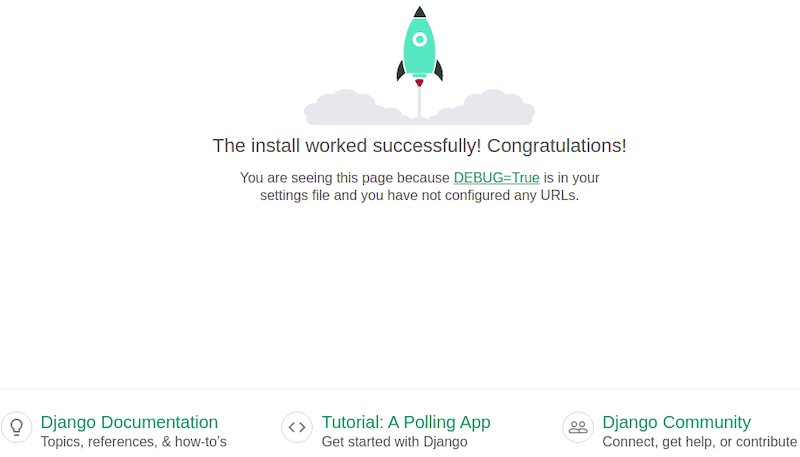How To Install Django on Ubuntu 22.04 LTS

In this tutorial, we will show you how to install Django on Ubuntu 22.04 LTS. For those of you who didn’t know, Django is a full-featured Python web framework for developing dynamic websites and applications. Built by experienced developers, it takes care of much of the hassle of web development, so you can focus on writing your app without needing to reinvent the wheel. Using Django, you can quickly create Python web applications.
This article assumes you have at least basic knowledge of Linux, know how to use the shell, and most importantly, you host your site on your own VPS. The installation is quite simple and assumes you are running in the root account, if not you may need to add ‘sudo‘ to the commands to get root privileges. I will show you the step-by-step installation of the Django Python web framework on Ubuntu 22.04 (Jammy Jellyfish). You can follow the same instructions for Ubuntu 18.04, 16.04, and any other Debian-based distribution like Linux Mint.
Prerequisites
- A server running one of the following operating systems: Ubuntu 22.04, 20.04, 18.04, and any other Debian-based distribution like Linux Mint.
- It’s recommended that you use a fresh OS install to prevent any potential issues.
- SSH access to the server (or just open Terminal if you’re on a desktop).
- A
non-root sudo useror access to theroot user. We recommend acting as anon-root sudo user, however, as you can harm your system if you’re not careful when acting as the root.
Install Django on Ubuntu 22.04 LTS Jammy Jellyfish
Step 1. First, make sure that all your system packages are up-to-date by running the following apt commands in the terminal.
sudo apt update sudo apt upgrade sudo apt install curl gnupg2 gnupg wget
Step 2. Installing Python3 and Pip3.
Ubuntu 22.04 comes with Python 3, if it doesn’t have it, install it by running the commands below on your terminal:
sudo apt install python3 python3-pip
Step 3. Installing Django on Ubuntu 22.04.
- Method 1: Install Django from the default repository of Ubuntu.
By default, the Django is not available on Ubuntu 22.04 base repository. Now run the following command below to install the latest version of Django using python3 command:
sudo apt install python3-django
Confirm the installation and check the installed build version of Django:
django-admin --version
- Method 2: Install Django using the Git repository.
Now we clone the directory of Django from the Git repository to our home directory using the command:
git clone https://github.com/django/django.git ~/django-dev
Change to the cloned directory and create the virtual environment “idroot_env” for the Django:
cd ~/django-dev python3 -m venv idroot_env && source idroot_env/bin/activate
Finally, install Django using the following command below:
pip install -e ~/django-dev
Step 4. Create a Sample Django project.
Now that the Django framework has been installed, you can give it a test drive by creating a sample project:
cd ~ django-admin startproject lajelitaproject
The command above will create a directory project in your working directory ~, and store all necessary files within.
Run the commands below in sequence to get your application started. Follow the instructions on the screen to provide the superuser’s credentials:
cd lajelitaproject/ python3 manage.py migrate python3 manage.py createsuperuser python3 manage.py runserver 0.0.0.0:8000
Step 5. Configure Firewall.
Ubuntu 22.04 has ufw a firewall running by default. Enable connection through ports 8000:
sudo ufw allow 8000 sudo ufw allow OpenSSH sudo ufw enable sudo ufw status
Step 6. Accessing Django Web Interface.
Once successfully installed, now open your favorite browser and navigate tohttp://Your-IP-address:8000. You should see the following page:

Congratulations! You have successfully installed Django. Thanks for using this tutorial for installing the Django web framework on Ubuntu 22.04 LTS Jammy Jellyfish system. For additional help or useful information, we recommend you check the official Django website.